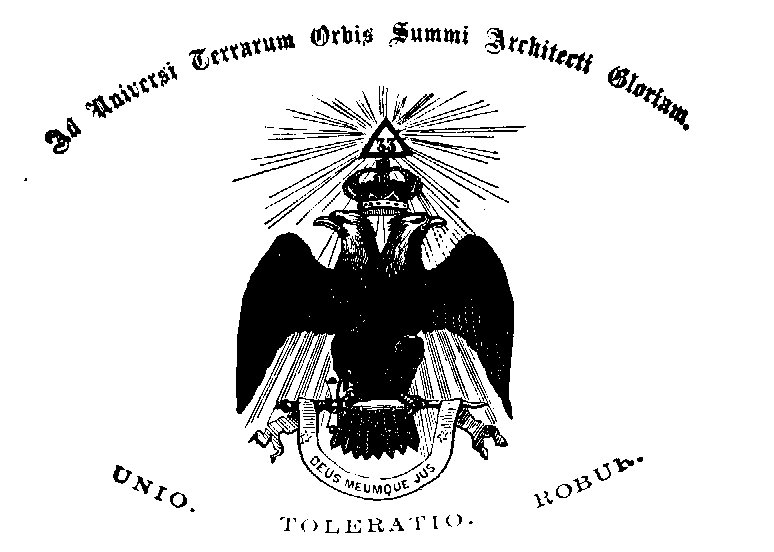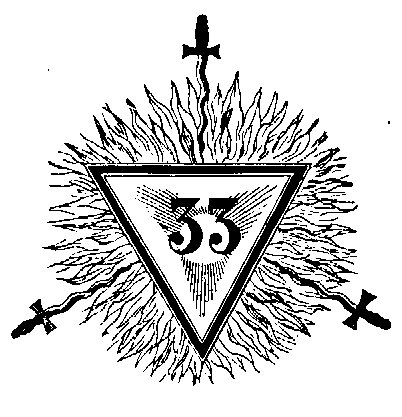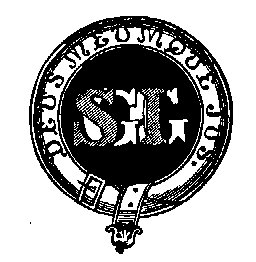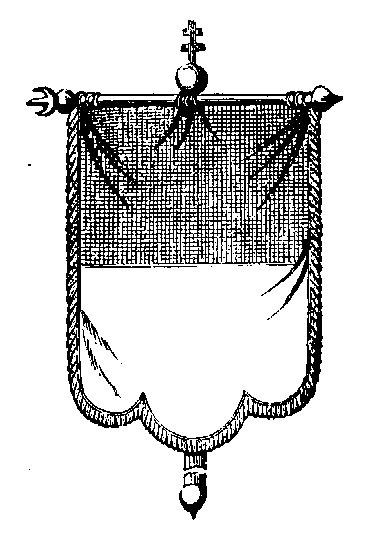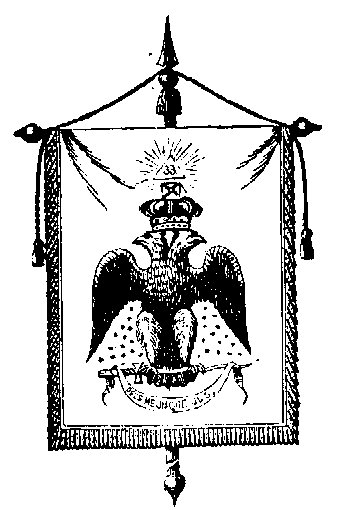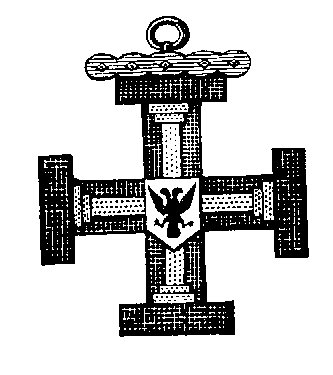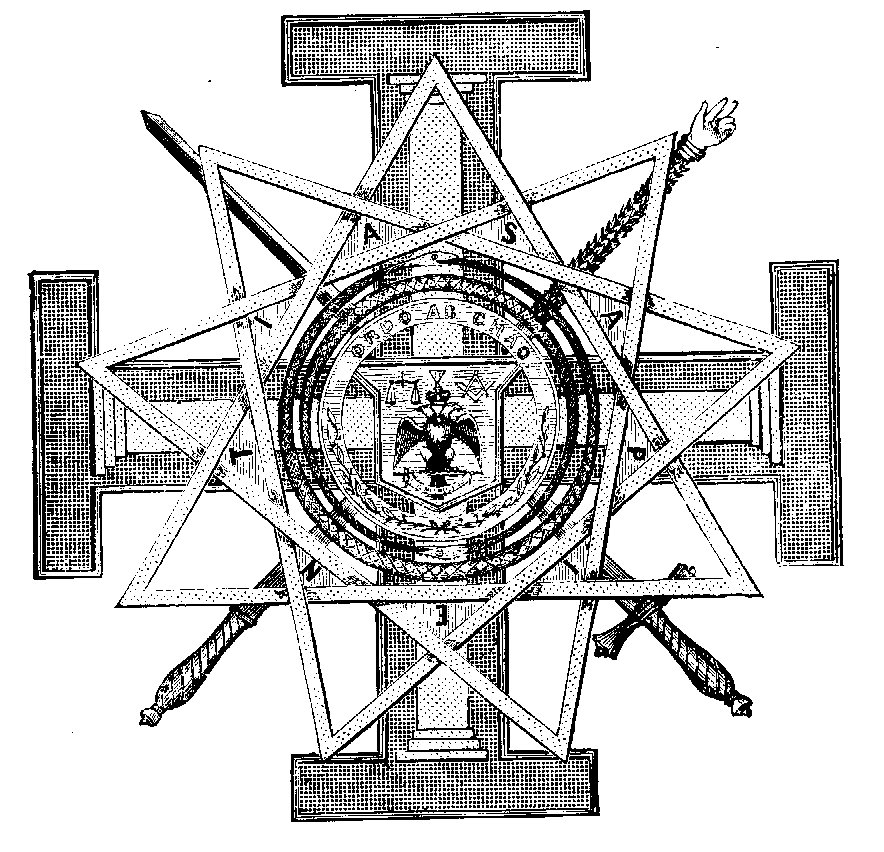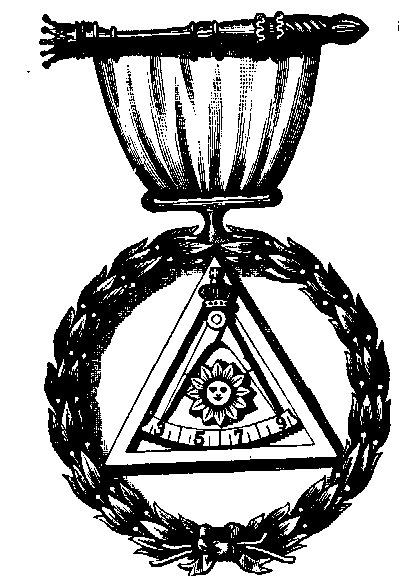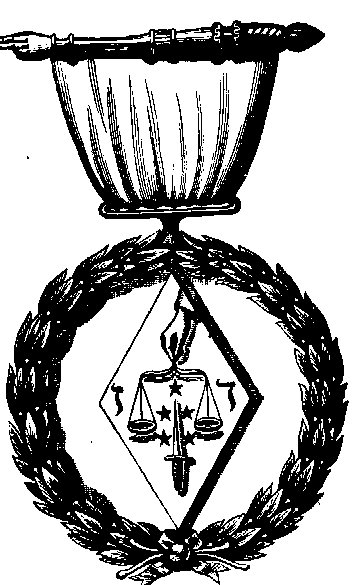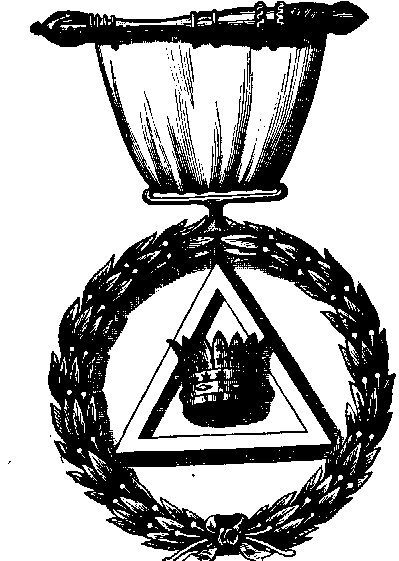The Web of Hiram |
Degrees of the Ancient and Accepted Scottish Rite14. Grand Elect, Perfect and Sublime Master Mason 15. Knight of the East or Sword 17. Knights of the East and West 18. Knight of the Rose-Croix de Heredom 20. Grand Master of all Symbolic Lodges 21. Noachite or Prussian Knight 25. Knight of the Brazen Serpent 29. Knight of St Andrew, or Patriarch of the Crusades |
SOVEREIGN GRAND INSPECTOR-GENERALThe Thirty-Third and Last Degree of the Ancient and Accepted Scottish Rite
PRERATORYIt may not be improper, in connection with this, the last degree of the Ancient and Accepted Scottish Rite, although but a casual allusion is made to the ritual of the grade, to premise that Masonry is not of itself a Religion. Like the Sun, it disseminates light and is the source of light; but, unlike that great luminary, which illuminates but one-half the globe at one and the same time, Masonry with its effulgence lights perpetually the entire Universe, and sends its rays of healing, consolation, and good cheer, dispelling ignorance, superstition, and error. Every good Mason respects the religion of his brother, though differing, perhaps, from his own, and hopes that all may be true in those respects where differences arise, and that each may be sufficiently near the truth to solve for himself the great problem of life and death; and surely no one who has looked thoughtfully on the checkered road through the wilderness, of this life, or who has stood, even for a moment, near the brink of the cold river of death, would be otherwise than reverential in the presence of any shrine to which a fellow creature may kneel for aid or consolation;- For we are doomed our native dust to wet with many a fruitless shower; and ill it suits us to disdain the Altar, to deride the fane where simple sufferers bend in trust to win a happier hour. To those who seek in this work a knowledge of the tenets and inculcations of the Rite, who may peruse the instructions and formula herein contained, the hand of sympathetic fellowship is extended, believing that the result of a careful study, combined with the ambition of the Enthusiast, will convince each and all that the Rite of which we essay to teach is replete in all its parts with the highest morality and fraternal devotion, leading man to sublimest thoughts and appreciation of the Present and a Hereafter; ever realizing in its surroundings and adornments the truth of that happy thought of England's youthful poet: A thing of beauty is a joy forever: Its loveliness increases; it will never pass to nothingness. The assembly is styled a Supreme Council, only one of which is allowed in any country except the United States, where there are two. DECORATIONSHangings, purple; with skeletons, death's heads, crow bones, etc., painted or embroidered thereon. In the East a magnificent throne; over it a purple canopy trimmed with gold. Beneath the canopy is a transparency representing a delta, in the centre of which are seen the ineffable characters.
Near the centre of the room is a quadrangular pedestal covered with scarlet cloth, on which rests a naked sword. On the north side of the council chamber is a skeleton erect, holding the white banner of the Order, opposite which, in the South, is the flag of the country. Over the interior portion of the entrance is a blue scarf bearing the device DEUS MEUMQUE JUS.. In the East is a candelabra with five branches; in the West, one with three branches; in the North, one with a single branch; and in the South, another with two branches; 5 + 3 + 1 + 2 (11) lights. The hat of a S.: P.: R.: S.: may appropriately be worn.
INSPECTOR-GENERALThe Thirty-third degree, or Inspector-General, being mainly executive in its character, and but seldom conferred, it is not deemed essential or for the benefit of the brethren generally to introduce any portion of its lectures here. It is conferred as an honorarium on those who for great merit and long and arduous services have deserved well of the Order.
THE FUNDAMENTAL STATUTES AND GRAND CONSTITUTIONS OF THE SUPREME COUNCIL OF THE THIRTY-THIRD DEGREE.1786.
ARTICLE IThe Banner; of the Order is white, bordered with a fringe of gold, and having in the centre a double-headed black eagle, its wings displayed, beak and legs gold, holding with one claw the hilt, gold, and with the, other the blade, steel, of a sword placed horizontally, hilt to the right and point to the left. From the sword hangs, lettered, gold, the motto, in Latin, DEUS MEUMQUE JUS. The eagle if; crowned with a triangle, ol gold and a purple fillet fringed and starred with gold.
ARTICLE IIThe distinctive insignia of Sovereign Grand Inspectors General are: 1. A Teutonic Cross worn on the left breast.
2. A broad white watered ribbon bordered with gold, and having on the front a golden triangle glittering with rays of gold, in the centre whereof is the number 33; and on each side of the upper angle of the triangle is a sword of silver pointing towards its centre. This ribbon, worn from the left shoulder to the right, ends in a point, with gold fringe, and has at the junction a rosette of crimson and leek-green ribbon, whereon is the general jewel of the Order. 3. The Jewel is an eagle like that on the banner, wearing the golden diadem of Prussia. 4. The Grand Decorations of the Order rest on a Teutonic Cross. They are a nine-pointed star, formed by three triangles of gold, one upon the other, and interlaced. From the lower part of the left side toward the upper part of the right extends a sword, and, in the opposite direction, a hand of Justice. In the middle is the shield of the Order, blue; upon the shield is an eagle like that on the banner; on the dexter side of the shield is a golden balance, and on the sinister a golden compass resting on a golden square. Around the whole shield runs a stripe of blue, lettered in gold with the Latin words " ORDO AB CHAO;" and this stripe is enclosed by a double circle formed by two serpents of gold, each holding his tail in his mouth. Of the smaller triangles formed by the intersection of the principal ones, those nine that are nearest the blue stripe are coloured red, and on each is one of the letters that constitute the word S. A. P. I. E. N. T. I. A.
5. The first three officers of the Supreme Council wear also a white scarf or sash, flinged with gold, hanging from, the right side. ARTICLE IIIThe Great Seal of the Order is a silver shield bearing a double-headed eagle, like that upon the banner of the Order, crowned with the golden diadem of Prussia, and centre the number 33. The eagle may, however, be over that a triangle of gold emitting rays, and in its surmounted by either the crown or triangle alone. At the base of the shield, under the wings and claws of the eagle, are thirty-three golden stars in a semicircle. Around the whole is this inscription: SUPREME COUNCIL OF THE 33D DEGREE FOR .......POWERS AND DUTIES OF DEPUTIES OF THE SUPREME COUNCILCONSTITUTIONART. 36.-1. There shall be a DEPUTY OF THE SUPREME COUNCIL for each State and Territory, who shall represent the SUPREME COUNCIL in his district, with power to visit and preside over any body of the Rite therein, and to do any act he may deem necessary in order fully to represent the Supreme Council. 2. He shall perform any duty specially assigned to him by the SUPREME COUNCIL, or the Most Puissant Sovereign Grand Commander. 3. He shall inspect all works of the Rite therein, correct irregularities, see that the Constitutions and the Regulations of the SUPREME COUNCIL and the General Laws of the Rite are respected and obeyed and he may suspend the charter or the functions of any officer of any subordinate body until the next Annual Session of the SUPREME COUNCIL, when he shall present the matter to it for such action as it may deem necessary ; provided, however, that such officer, or any member or members of such body, may appeal from his order to the Most Puissant Sovereign Grand Commander for his decision; but the pendency of such appeal shall not vacate such order. lf, in consequence of the suspension of any officer or officers, there is no one remaining who succeeds to the chair under the Constitutions and Ritual, the Illustrious Deputy may appoint an officer with full powers to preside during such suspension, or until the vacancy is regularly filled. Such suspension of the charter shall not of itself affect the Masonic standing of the members of the body. 4. He may transmit and present directly to the SUPREME COUNCIL, or the Most Puissant Sovereign Grand Commander, the petitions for dispensations, charters and letters patent preferred to him by Consistories, Chapters, Councils, Lodges, or individuals under his jurisdiction, having first obtained the recommendation of the Council of Deliberation, when such recommendation is required. 5. He shall collect all dues from the various Bodies of the Ancient Accepted Scottish Rite in his jurisdiction, and on or before the fifteenth day of July in each year forward the same, with a detailed statement thereof, to the Grand Secretary-General. 6. He shall lay before his Council of Deliberation a full report of the work in his jurisdiction, calling attention to such things as demand its special consideration. 7. He may, when unavoidably necessary, specially deputize in writing another member of the Thirty-third Degree, resident of the State, to perform for him,. in his name, any specially enumerated official act, and shall be responsible for the acts of such substitute. In all such cases he shall send a copy of such deputisation to the Most Puissant Sovereign Grand Commander. 8. Should he be obliged to leave his State on temporary business for an uncertain period of time, he may, with the consent of the Most Puissant Sovereign Grand Commander, appoint an Active Member as Deputy to act for him in his absence. 9. Any Brother or Body aggrieved by an act or decision of an Illustrious Deputy, may appeal therefrom to the SUPREME COUNCIL at its next Annual Session ; but such an appeal shall not be suspensive. In such case it shall be the duty of the Illustrious Deputy to present such appeal and a copy of all papers relating thereto to the SUPREME COUNCIL as soon as practicable after the opening of its next Annual Session.
|
|
|
||||||||||||
|
|
[ to top ] |
